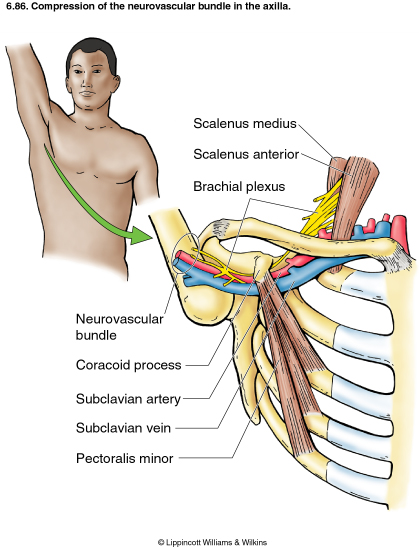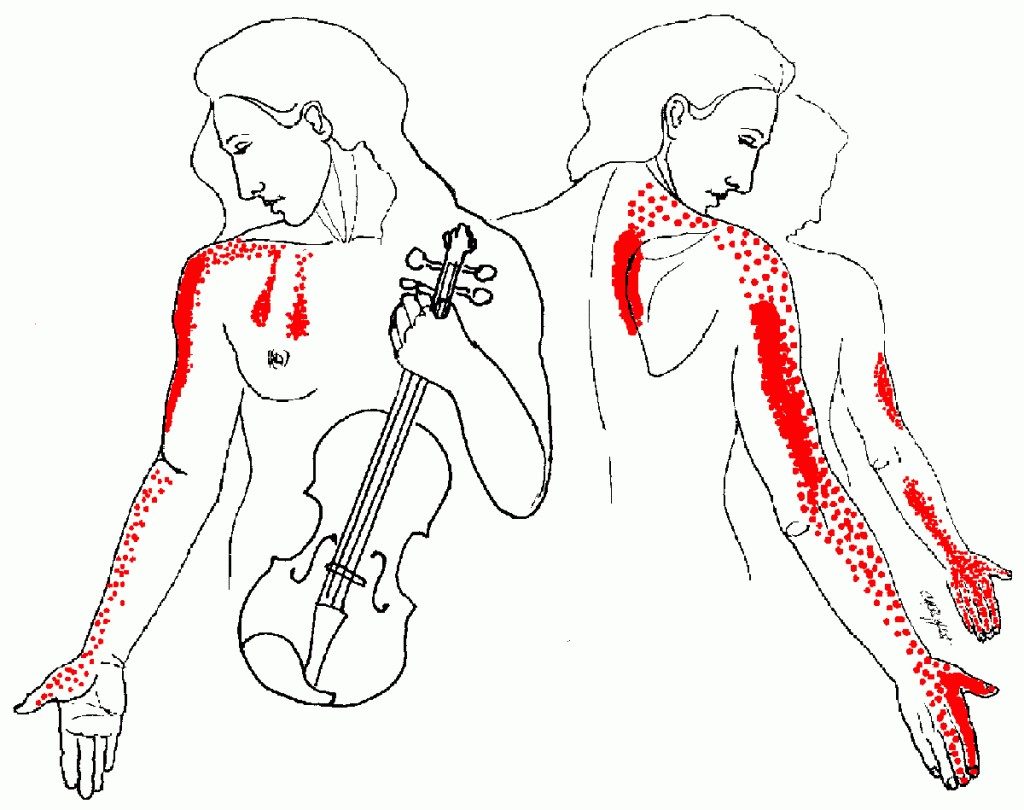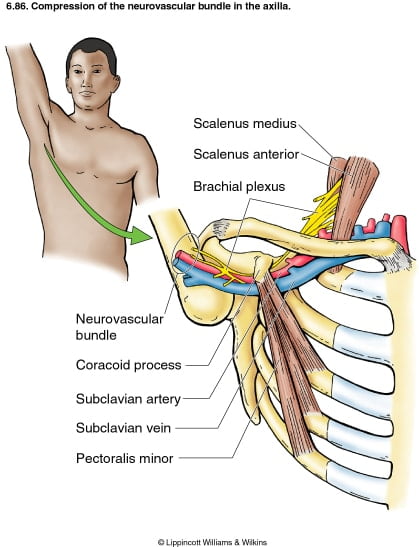Blog post by Mal Fayers, Physiotherapist
Thoracic outlet syndrome, or TOS, is a complex condition that can take years to diagnose. For many, getting an answer as to why their arm has been sore or numb is a long and difficult process. But once identified, TOS can be treated and those suffering can once again live pain free.
TOS is a condition that encompasses a number of arm symptoms that are associated with the compression of small groups of tissue known as neurovascular bundles. A neurovascular bundle is a structure that binds nerves and veins together, which are responsible for sending signals to and from the brain, as well as returning blood to the heart. In TOS, these bundles are compressed in an area called the thoracic outlet. This outlet is made up of the area above the first rib and behind the collar bone.
TOS affects approximately 8% of the population.

It is three to four times more common in women than men, and typically affects those between 30 and 40 years old. Structural anomalies, such as the presence of an extra rib or abnormalities at the attachments of some neck muscles can be responsible for the development of TOS.
TOS is divided into two types; vascular and neurological. Vascular TOS accounts for 5% of all diagnoses and affects the blood supply within the thoracic outlet region. Neurological TOS is further broken down into true and symptomatic subgroups. True TOS has confirmed abnormalities through investigative imaging. Whilst symptomatic TOS is the presence of symptoms without any abnormal findings with imaging. Incredibly, symptomatic TOS accounts for approximately 80% of all diagnoses. That is to say four out of five patients diagnosed with TOS show symptoms without confirmation of a structural cause with scans.

The signs and symptoms of TOS can be anywhere from annoying to extremely painful. Pain in the neck, shoulder, arm, or chest are all commonly reported symptoms. Tingling and numbness in the arm are also seen often. More rare symptoms include swelling, coolness, and visible discolouration of the arm. It is important to take note of all symptoms when dealing with potential TOS, as they can assist in the type of syndrome diagnosed. Additionally, those dealing with TOS tend to present with thick, tight scalene muscles in the neck.
Physiotherapy for Thoracic Outlet Syndrome?
Want to know how a physiotherapist will help with your Thoracic Outlet Syndrome? This blog will discuss the diagnosis and treatment of TOS. Previously, we looked at thoracic outlet syndrome (TOS) and its signs and symptoms.
TOS is a diagnosis by exclusion. That is, through excluding other potential pathologies, TOS can be confirmed. Using guidelines developed by Illig et al, a group of vascular surgeons, three of the following four need to be present in order to accurately diagnose neurological thoracic outlet syndrome: signs and symptoms of pathology at the thoracic outlet (scalene triangle or pectoral insertion), signs and symptoms of nerve compression that gets worse with the arm above the head, the absence of other conditions of the shoulder, positive response to injections into the scalene muscles. Your physiotherapist will perform a comprehensive assessment, which includes an in-depth history and full upper limb examination in order to identify potential signs pointing to TOS. These include shoulder range of motion, nerve testing, shoulder blade control, and several pain provocation tests aimed at including TOS as a diagnosis.
TOS is generally treated conservatively. Through manual therapy to treat underlying physical causes, the use of anti-inflammatory medication, Botox, and exercises, most TOS cases improve over time and patients make full recoveries. Exercises are targeted towards nerve mobilisation, shoulder blade muscle strength and control,

deep neck muscle control, and posture. Rarely, TOS may necessitate the decompression or removal of the first rib. These are only in cases that do not respond to conservative management.
If you’ve spent months searching for an answer, contact RHP Physiotherapy today and take your first steps towards living pain free.
